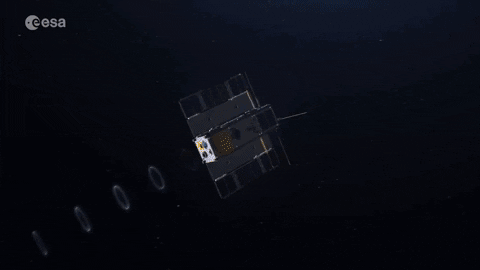Construction begins at UK's first vertical launch spaceport
Friday, 05 May 2023 07:19 Orbex has announced that construction has begun at Sutherland Spaceport (formerly known as Space Hub Sutherland) in Scotland, making this the first vertical launch spaceport to be built on the UK mainland. Located on the North coast of Scotland, the spaceport will be the 'home' spaceport of Forres-based rocket and launch services company, Orbex, which will use the site to launch up to 12 orbital
Orbex has announced that construction has begun at Sutherland Spaceport (formerly known as Space Hub Sutherland) in Scotland, making this the first vertical launch spaceport to be built on the UK mainland. Located on the North coast of Scotland, the spaceport will be the 'home' spaceport of Forres-based rocket and launch services company, Orbex, which will use the site to launch up to 12 orbital NOAA's GOES-U completes solar array deployment test
Friday, 05 May 2023 07:19 Washington DC (SPX) May 04, 2023
GOES-U, the fourth and final satellite in NOAA's GOES-R Series, recently completed a successful test deployment of its solar array to ensure it will function properly in space.
This critical test verified that the satellite's large, five-panel solar array - which is folded up when the satellite is launched - will properly deploy when GOES-U reaches geostat
Washington DC (SPX) May 04, 2023
GOES-U, the fourth and final satellite in NOAA's GOES-R Series, recently completed a successful test deployment of its solar array to ensure it will function properly in space.
This critical test verified that the satellite's large, five-panel solar array - which is folded up when the satellite is launched - will properly deploy when GOES-U reaches geostat US regulator targets AI ahead of White House confab
Friday, 05 May 2023 07:19 A US regulator put artificial intelligence in the crosshairs ahead of a White House meeting Thursday with tech firms to strategize about its dangers.
"While the technology is moving swiftly, we already can see several risks," Federal Trade Commission chief Lina Khan wrote in a guest essay in the New York Times.
"Enforcers and regulators must be vigilant."
The tough talk comes as US l
A US regulator put artificial intelligence in the crosshairs ahead of a White House meeting Thursday with tech firms to strategize about its dangers.
"While the technology is moving swiftly, we already can see several risks," Federal Trade Commission chief Lina Khan wrote in a guest essay in the New York Times.
"Enforcers and regulators must be vigilant."
The tough talk comes as US l Speedy composite manufacturing
Friday, 05 May 2023 07:19 An Oak Ridge National Laboratory-developed advanced manufacturing technology, AMCM, was recently licensed by Orbital Composites and enables the rapid production of composite-based components, which could accelerate the decarbonization of vehicles, airplanes and drones.
Additive manufacturing compression molding, or AMCM, uses short-fiber-filled polymer and continuous fiber to print directl
An Oak Ridge National Laboratory-developed advanced manufacturing technology, AMCM, was recently licensed by Orbital Composites and enables the rapid production of composite-based components, which could accelerate the decarbonization of vehicles, airplanes and drones.
Additive manufacturing compression molding, or AMCM, uses short-fiber-filled polymer and continuous fiber to print directl Raytheon Technologies develops 'NexGen Optix' Tactical Free-Space Optical Comms
Friday, 05 May 2023 07:19 Raytheon Technologies (NYSE: RTX), announced the launch of NexGen Optix, a tactical Free-Space Optical Communications system that enables high-speed, secure data transfer in challenging environments.
NexGen Optix, developed by Raytheon Blackbird Technologies, provides greater bandwidths in a form factor that is smaller, weighs less, uses less power and costs less than conventional optical
Raytheon Technologies (NYSE: RTX), announced the launch of NexGen Optix, a tactical Free-Space Optical Communications system that enables high-speed, secure data transfer in challenging environments.
NexGen Optix, developed by Raytheon Blackbird Technologies, provides greater bandwidths in a form factor that is smaller, weighs less, uses less power and costs less than conventional optical Researchers capture elusive missing step in the final act of photosynthesis
Friday, 05 May 2023 07:19 Photosynthesis plays a crucial role in shaping and sustaining life on Earth, yet many aspects of the process remain a mystery. One such mystery is how Photosystem II, a protein complex in plants, algae and cyanobacteria, harvests energy from sunlight and uses it to split water, producing the oxygen we breathe. Now researchers from the Department of Energy's Lawrence Berkeley National Laboratory
Photosynthesis plays a crucial role in shaping and sustaining life on Earth, yet many aspects of the process remain a mystery. One such mystery is how Photosystem II, a protein complex in plants, algae and cyanobacteria, harvests energy from sunlight and uses it to split water, producing the oxygen we breathe. Now researchers from the Department of Energy's Lawrence Berkeley National Laboratory Earth from Space: Farming the desert
Friday, 05 May 2023 07:00 Image:
The Copernicus Sentinel-2 mission takes us over El Oued, in northeast Algeria, about 80 km west of the border with Tunisia.
Image:
The Copernicus Sentinel-2 mission takes us over El Oued, in northeast Algeria, about 80 km west of the border with Tunisia. Boeing preparing to ship milestone O3b mPower satellites for launch
Thursday, 04 May 2023 21:08
The last pair of satellites SES needs to provide upgraded broadband services from medium Earth orbit have completed tests ahead of an early June launch, SES said during financial results May 4.
'Space waves' offer new clues to space weather
Thursday, 04 May 2023 20:20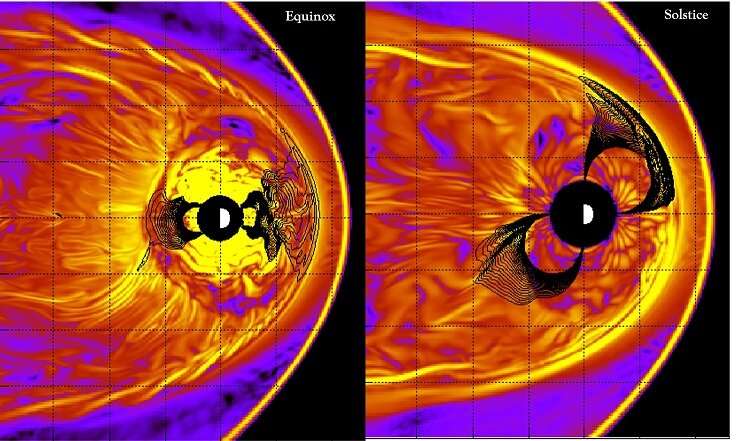
More accurate space-weather predictions and safer satellite navigation through radiation belts could someday result from new insights into "space waves," researchers at Embry-Riddle Aeronautical University reported.
The group's latest research, published on May 4, 2023, by the journal Nature Communications, shows that seasonal and daily variations in the Earth's magnetic tilt, toward or away from the sun, can trigger changes in large-wavelength space waves.
Debate rages about future of New Horizons
Thursday, 04 May 2023 19:32
NASA and the science team for a spacecraft in the outer reaches of the solar system are locked in a dispute about the future of that mission and the science it can perform.
Lockheed Martin announces reorganization of its space business
Thursday, 04 May 2023 19:17
Lockheed Martin announced May 4 it is consolidating several businesses focused on space into three sectors: Commercial civil space, national security space, and strategic and missile defense.
Prep in the pool for Europe's next astronauts
Thursday, 04 May 2023 16:35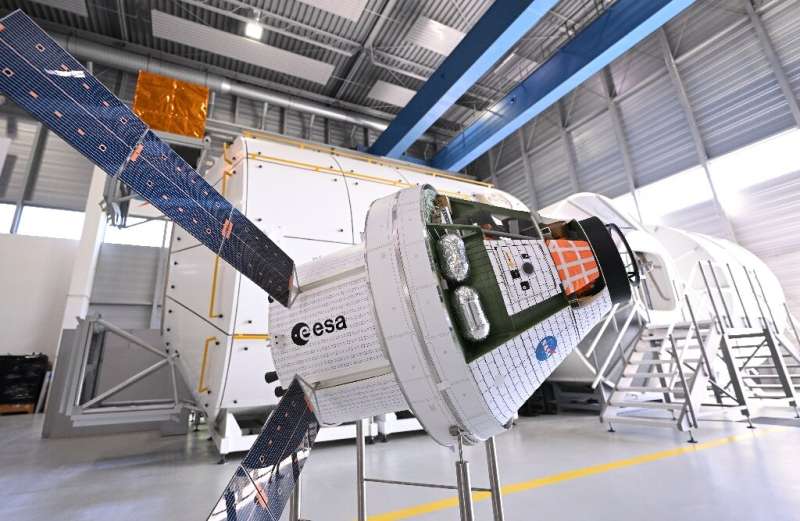
A new cohort of astronauts at the European Space Agency's training center in Cologne, Germany, can expect to see time in both the pool and the classroom as they get ready to head into orbit.
Trainees dive into the water to emulate the experience of working in zero gravity, as well as studying a variety of subjects from medicine to geology.
The aim of the curriculum is to prepare the group for service on the International Space Station (ISS) and later on a potential mission to the moon.
"The biggest challenge is to learn so many different things in a very short period of time," British astronaut Rosemary Coogan, 31, told AFP in an interview.
Africa eyes potential bounty from space
Thursday, 04 May 2023 16:34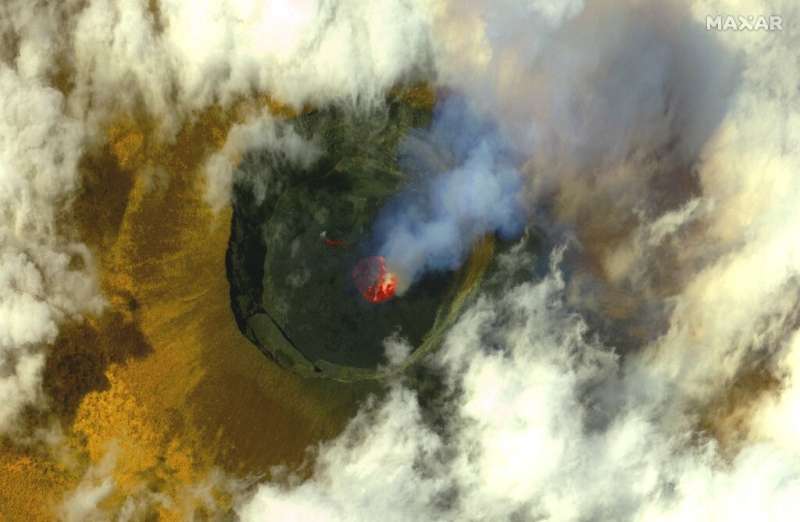
After decades on the sidelines, African countries are venturing into the space industry, hoping to reap rewards in agriculture, disaster prevention and security.
Ivory Coast, which recently hosted a "NewSpace Africa" conference organized by the African Union, has announced the creation of a space agency and plans to build the country's first nanosatellite by 2024.
In April, Kenya's first working satellite was put into orbit by a SpaceX rocket launched from the United States.
The two countries follow African pioneers South Africa, Nigeria, Algeria and Egypt—a trailblazer which owned the first African satellite sent into space in 1998.
NOAA's GOES-U satellite completes solar array deployment test
Thursday, 04 May 2023 12:19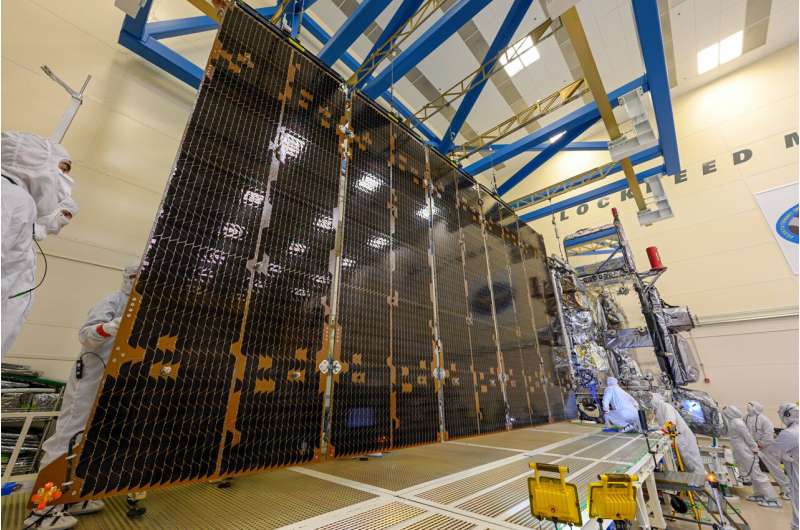
GOES-U, the fourth and final satellite in NOAA's GOES-R Series, recently completed a successful test deployment of its solar array to ensure it will function properly in space.
This critical test verified that the satellite's large, five-panel solar array—which is folded up when the satellite is launched—will properly deploy when GOES-U reaches geostationary orbit. During this test, engineers unfurled the five panels on rails that simulated the zero-gravity environment of space. Each solar panel is approximately 13 feet tall by 4.5 feet wide and weighs approximately 45 pounds.
Once GOES-U reaches orbit, the deployed solar panels will form a single solar array wing that will rotate once per day to continuously point its photovoltaic (solar) cells toward the sun. The photovoltaic cells will convert energy from the sun into electricity to power the entire satellite, including the instruments, computers, data processors, sensors, and telecommunications equipment. The solar array will generate more than 5,000 watts of power for the satellite. This is equivalent to the power needed to run a central air conditioning system in your home.


